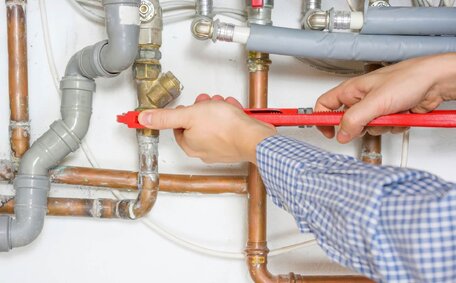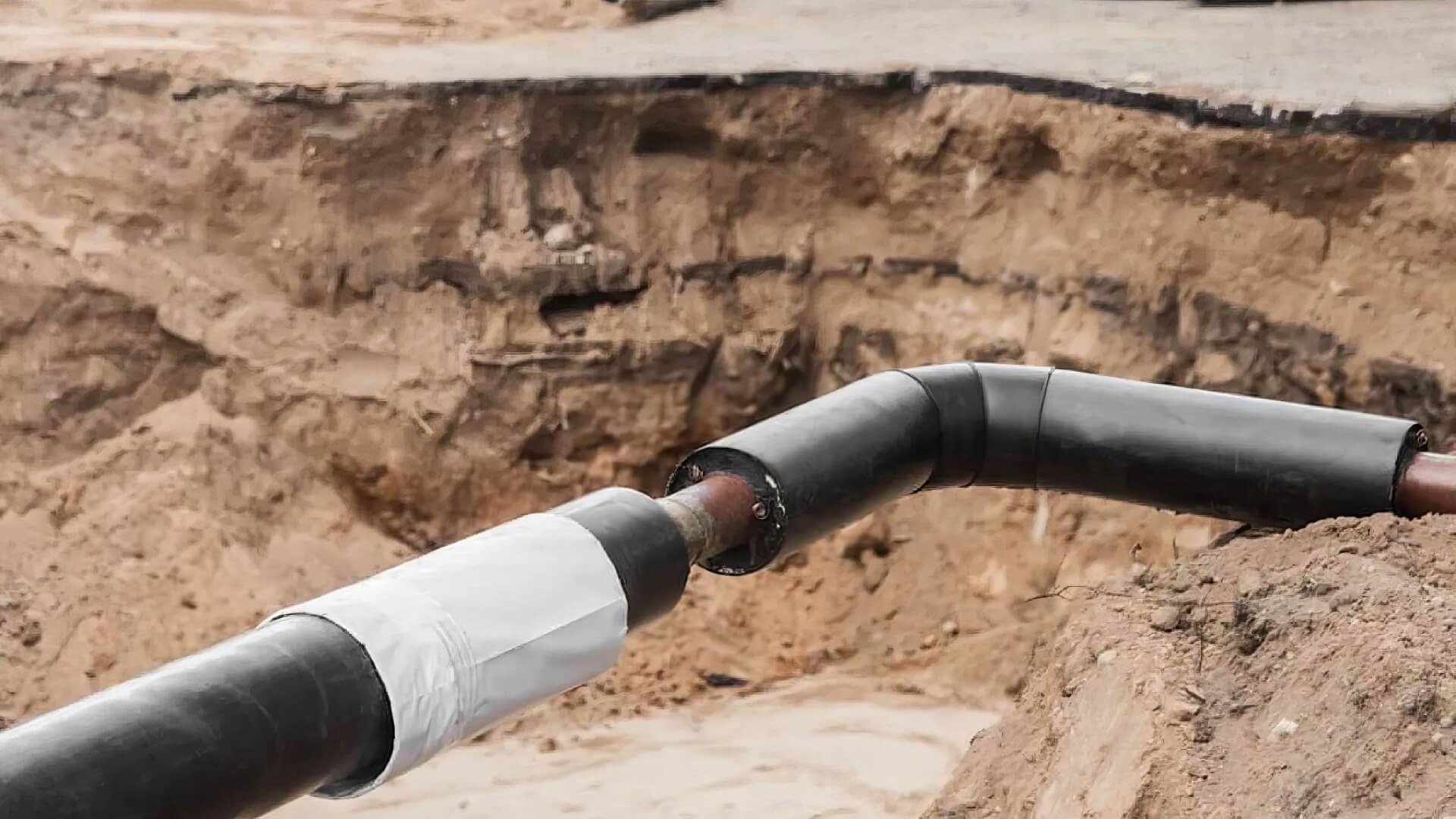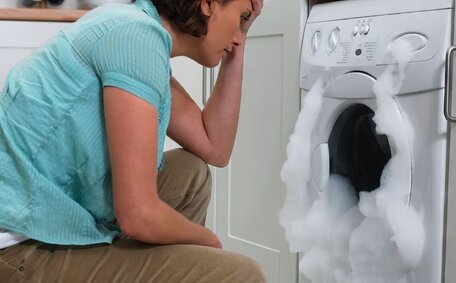
What’s involved in upgrading your gas meter?
Upgrading your gas meter is a simple process completed by qualified technicians. It involves disconnecting your gas supply for 15 minutes to swap the meter. Contact us today for a quote.
Read MoreMany Australian homes built before 1972 favoured iron sewer pipes, particularly cast iron, for drainage systems due to their durability and high-pressure resistance.
Over time, cast iron pipes can deteriorate and may develop issues requiring sewer pipe repair:
These concerns may call for our pipe relining solutions to enhance your drainage capacity and bolster the structural integrity of your pipes. Once cast iron pipes begin deteriorating, the damage is irreversible. Property owners might require a skilled plumbing team for effective pipe work through relining or replacement to restore function and prevent catastrophic failures.
There are several tell-tale signs that indicate your cast iron pipes may be in need of relining:
Rust stains or water discolouration on your pipes are clear indicators of internal corrosion, suggesting the need for pipe relining. Likewise, orange mineral deposits forming on your drain joints may suggest they’ve come into contact with corrosive substances.
Frequent blockages that require constant plunging or professional assistance suggest internal pipe deterioration.
Listen for gurgling, clanking or rushing water noises coming from pipes. This can indicate partial blockages, air pockets or obstacles inside deteriorated pipes.
If you detect a foul odour emanating from your plumbing, it’s a sign that sewer gas is escaping through leaks, and pipe relining by our expert team can ensure lasting integrity.
Leaks in cast iron pipe systems often stem from corrosion-induced cracks, cavities, and joint issues. Rust stains near pipe drain joints often signal leaks in cast iron systems, hinting at potential water damage.
Drainage that seems sluggish or takes longer than usual is a red flag, indicating you may need our relining solutions due to potential blockages or narrowing.
If any of these warning signals appear in your home, call us to learn more about cast iron pipe relining and to receive your free quote. You can see our impeccable camera inspection process that appraises the interior condition of pipes, determining if relining is advocated to rejuvenate your pipelines, thus preventing further deterioration.
As cast iron sewer pipes age, drain relining can mitigate the inevitable corrosion. This corrosion often occurs along the bottom of pipes where sediment and waste can accumulate. The buildup of mineral deposits and rust flakes inside the damaged area of the pipe causes pitting corrosion and erosion.
This corrosion weakens the structural integrity of cast iron pipes from the inside out. Corroded sections of pipe become brittle and prone to cracking. Cracked broken sections in pipes enable moisture and roots to cause further damage, accelerating deterioration.
It takes only one two tiny root hairs to find their way through the cracks, even via microscopic fissures in your sewer pipes, in pursuit of water. Cracked and broken pipes may result as the roots grow larger, carving their way through, exerting force on pipes, broadening cracks and facilitating more root intrusion. When conditions lead to a broken pipe, tree roots are a major culprit behind sewer line damage.
Pipe relining is highly effective at sealing cracks and reinforcing weakened sections. Epoxy resin used in CIPP lining forms a cured layer within the pipe, effectively filling pits and gaps. Once cured, your pipe made durable by relining, forms a protective barrier that halts corrosion and withstands root pressure.
Relining enhances the structural stability for all cast iron materials and staunches leaks cast iron, thereby averting further harm.
Tree root intrusion is a major contributor to drain pipes damage in older cast iron sewer systems. As tree roots grow, they will seek out any cracks or openings in underground pipes in search of moisture and nutrients.
Even strong cast iron pipes can suffer from blockages when tiny root hairs penetrate small cracks, an issue that sewer pipe relining addresses. Once the roots enter, they’re no longer just a minor issue; they continue to expand, applying force on the pipe walls and joints, potentially necessitating repair or replacement. This scenario often necessitates a decision on whether to repair replace the compromised pipe segments.
Unmanaged root presence can lead to full blockages as they accumulate inside damaged cast iron pipes, often necessitating repairs. Dense root clumps can block the water flow, and wastewater can be stifled, resulting in backups and drainage issues.
Pipe relining can prove to be an effective solution to repair cast iron pipe systems compromised by tree root intrusion. It involves coating the interior of the pipe with an epoxy resin. Once the material forms a cured place pipe, it creates a robust barrier that seals off any cracks, resulting in a smooth, seamless surface.
This ensures there no opportunity for new root growth to damage the pipe. The epoxy resin is also strong enough to withstand the force exerted by existing root structures inside the pipe. Relining, a technique that can be remarkably effective, helps create pipe within your current pipeline, deterring root encroachment.
Choosing pipe relining allows homeowners to prevent future root damage without excavation, avoiding the significant cost and disturbance of full pipe replacement. Relining restores drainage capacity and resolves root intrusion issues swiftly, with minimal disruption; For additional information, contact us, and our customer-focused team will promptly assist you.
There are a few trenchless methods for relining deteriorated cast iron pipes, restoring structural stability and preventing leaks.
The most common and relining best technique for situations including under slab pipes involves installing a fibreglass liner, Important to note, the length liner is precisely cut to match the pipe’s specifics before it’s coated in UV-curable epoxy resin. Once the liner is lowered into the pipe, it is inflated and the resin is cured in place using special UV lights. This creates a smooth, corrosion-resistant place pipe within the old cast iron.
A similar liner coated in a two-part epoxy resin can used even in tight spots, and this technique is suitable for cases where only one specific pipe dimension is present. The epoxy is conveniently cured in place at ambient temperatures so no UV light is needed. This method operates efficiently for pipes with a diameter up to 8 inches.
Cement mortar relining entails applying a coating inside of the pipe without disrupting current liners, forming a protective layer. This method provides good corrosion resistance but doesn’t seal cracks as effectively.
For our customers, pipe relining with epoxy or UV-cured resin offers the best results. Dedicated to our customers, we ensure the flexible liners, once cured in place in cast iron pipe lining, can traverse various bends to conform to any shaped pipe, sealing cracks and voids. Relining restores flow capacity and prevents further corrosion and leaks.
A key advantage of trenchless relining is its capacity to navigate bends without digging up your property. The flexible liner positions in place within the pipe, shaping itself to the original form and sealing off any leaks or breaches. For those facing plumbing challenges, one can start to see how trenchless relining emerges as a secure solution within your options.
Our trenchless technology ensures a mess-free process, as we insert the liner through just a single small access point.
Indoor access points are securely sealed to maintain health safety and prevent the escape of dust or debris.
In some severe cases of pipe deterioration, relining may not be possible and full pipe replacement becomes necessary. This is particularly relevant when pipes have totally collapsed or its often the case when they have become critically misaligned.
A full replacement involves excavating the old pipes and fitting new PVC pipes for restored efficiency and integrity. While more disruptive than relining, to replace your piping is sometimes the only option when pipes are beyond repair.
Factors indicating the need for full replacement include:
In cases of extreme damage, trust that it’s your job to decide, but our professionals may recommend full pipe replacement. We use advanced trenchless technologies to keep excavation and disruption minimal. Your plumbing system will be fully restored with smooth, leak-free pipes designed to last for decades.
Both techniques, as part of the services we offer, are crafted to endure and protect your property, potentially lasting 50+ years when expertly applied. Relining rejuvenates your system by creating a pipe within a pipe, whereas replacement involves laying a completely new pipeline.
Should your iron sewer pipes show moderate cracking or corrosion, yet sustain good structural integrity, feel free to consider relining as a solution. Replacement is best for pipes that are severely damaged beyond repair or have fully collapsed.
In conclusion, pipe relining is a cost-effective and less disruptive alternative that offers homeowners reassurance for moderately damaged cast iron sewer pipes. However, severely damaged pipes may require complete replacement. Contact us to identify the most suitable solution for your situation.
Preparing for a pipe relining project involves a few key steps:
Select a contractor with a strong track record in pipe relining to ensure optimal results. They should provide proof of proper training, licencing, and insurance. Choose a company with a strong track record of successful relining projects.
Camera inspections pinpoint the precise location and severity of any pipe deterioration from the inside. They can determine the exact locations and severity of any cracks, corrosion, root intrusion or other damage. This helps design an optimal relining solution.
Pipes must be thoroughly cleaned before beginning the relining process. The plumber will use specialised equipment to remove any built-up debris, grease, mineral deposits or roots.
Essential for the process, locating and accessing cleanouts serves as the primary insertion point for relining tools. This serves as an insertion point for the relining tools during the process. Some excavation may be required to uncover buried cleanouts.
The area where the pipe work will take place is meticulously sealed with protective coverings, safeguarding your interior space from dust and debris. Outdoors, caution is taken around landscaping and structures.
Proper preparation ensures a smooth relining process, reinstating functionality with minimal disruption. Get in touch with us to begin safeguarding your pipes effectively.
We are fully licensed and offer up to 50-year warranties on pipe relining projects, with valuable local knowledge about regional soil conditions and infrastructure.
At Mortdale Plumbing, our team, with over 50 years of shared expertise, has excelled in relining various types of deteriorating pipes across Sydney, including the eastern suburbs.
Before starting any relining project, it’s crucial to thoroughly inspect the existing cast iron pipes using CCTV drain cameras. This allows our technicians to diagnose the overall condition and integrity of your pipe system.
CCTV inspections involve feeding a specialised camera through your pipes while recording the footage. This creates a complete visual record of the interior, revealing any problem areas like cracks, corrosion, blockages, or root intrusion.
For pipes with moderate cracking and corrosion, relining can often restore function. But severely collapsed or misaligned pipes typically require replacement.
You can see from the CCTV inspection footage that we recommend the right solution for your home. It also assists with planning the relining process, ensuring we can navigate any bends, junctions or tricky sections of pipework.
Don’t delay consideration of how pipe relining works until you face a crippling pipe failure. Circumvent plumbing catastrophes by booking a CCTV inspection to check out your pipes as soon as any problems become apparent. We can assess the condition and advise on suitable trenchless relining or repair options.
This creates a complete visual record of the interior, revealing any problem areas like cracks, corrosion, blockages, or rooity of relined cast iron pipes, ongoing maintenance is crucial. Here are some tips for keeping your relined pipes in top condition:
Proactive measures help keep your relined pipes in optimal condition for decades, ensuring peace of mind. Book regular plumbing check-ups with our team at Mortdale Plumbing to offer you peace of mind by identifying and addressing any issues before they escalate. Maintain your relined pipes correctly, and don’t hesitate to contact us if any issues arise; they’ll serve you reliably for years.
Upgrading your gas meter is a simple process completed by qualified technicians. It involves disconnecting your gas supply for 15 minutes to swap the meter. Contact us today for a quote.
Read MoreWe use only the most durable, long-lasting and eco-friendly pipe relining materials such as PVC and epoxy resin to repair pipes without excavation.
Read MoreChemical drain cleaners contain toxic chemicals like sulfuric acid and sodium hydroxide that can damage pipes, disrupt septic systems, and harm humans if inhaled or make contact with skin. Avoid chemical drain cleaners and call Mortdale Plumbing at [phone] for safe, eco-friendly drain cleaning.
Read MoreMortdale, 2223 NSW
We will call back as soon as possible.




